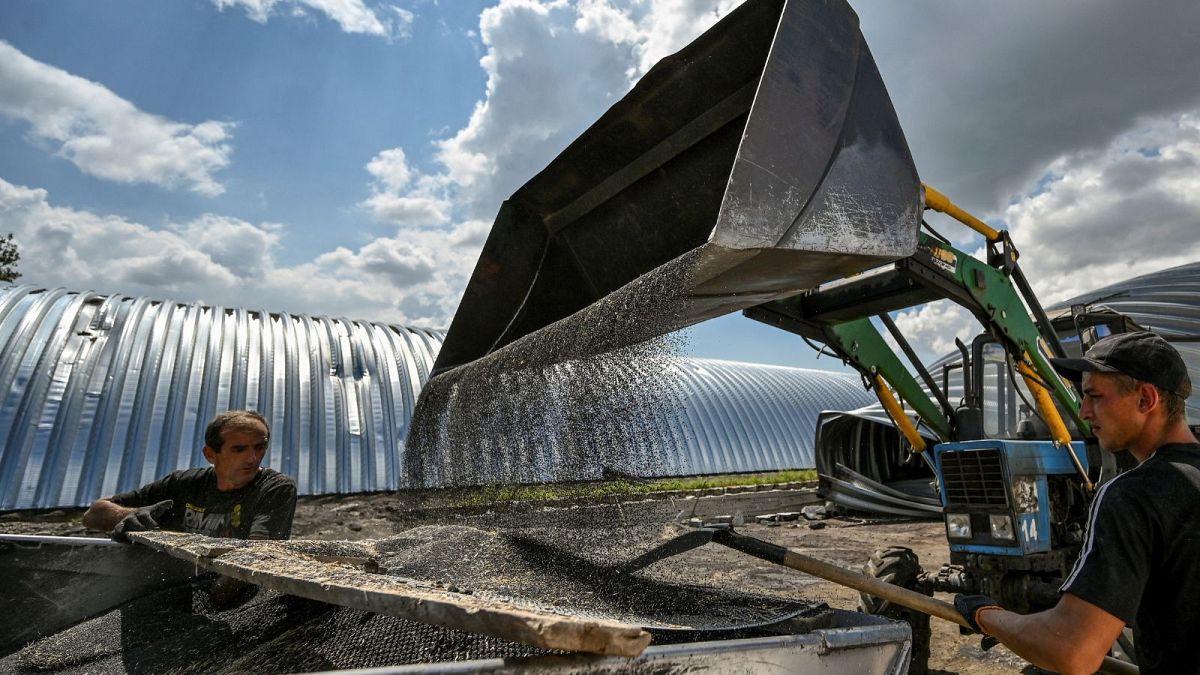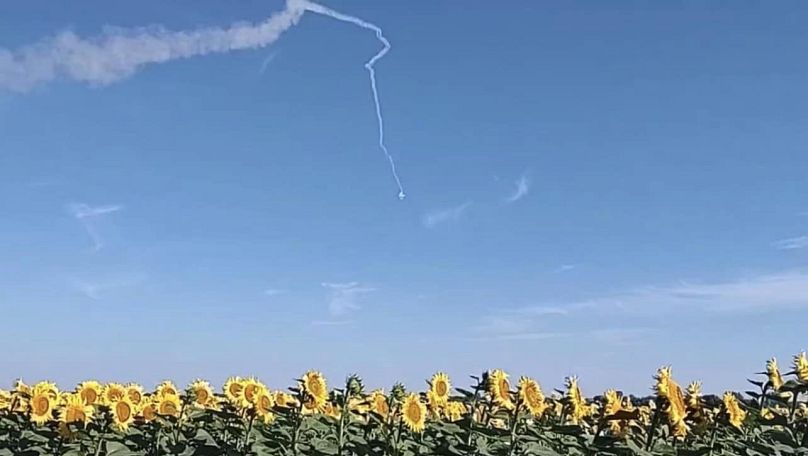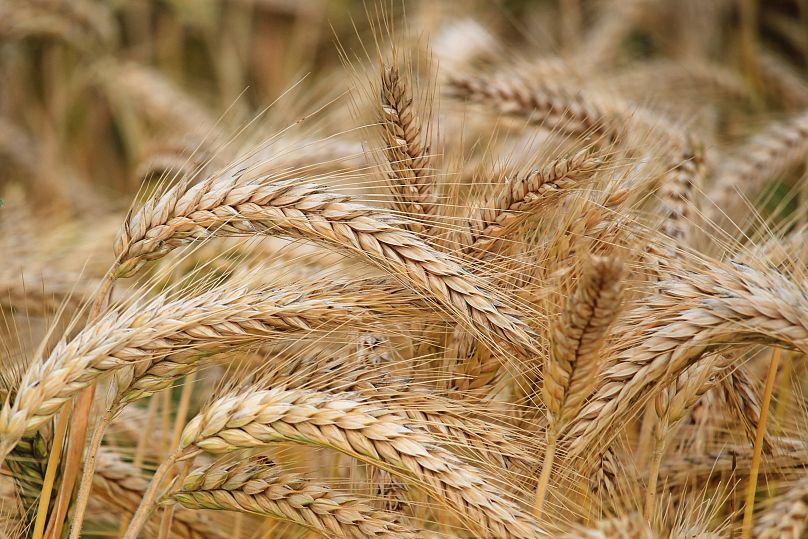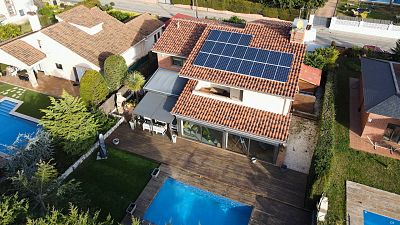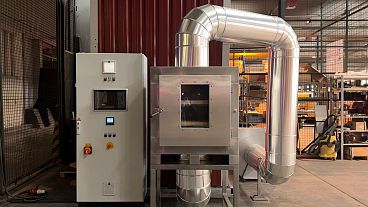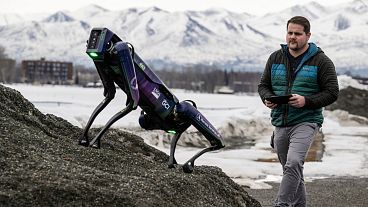Ukrainian grain ships are leaving again, but the country’s seed bank is still in danger. Here's why its diverse contents are so vital.
Ukraine’s national seed bank was jeopardised by Russian shelling in May, potentially endangering future food production.
On May 16, a YouTube video surfaced from the private account of Serhiy Avramenko, lead researcher at the Yuriev Plant Production Institute in Kharkiv. It showed the remaining rubble of a shelled building.
Reports soon followed, providing contradicting accounts of the building destroyed and unknown status of the national seed collection. Technical officer for the UN Food and Agriculture Organisation (FAO)'s International Treaty on Plant Genetic Resources, Elly Barrett, confirms that the national seed collection was not, in fact, destroyed but is highly vulnerable.
Barrett is part of an international initiative working with international organisations, the Yuriev Institute and the FAO office in Ukraine to support and secure the institute, its staff and its seed collection. She says that the video depicted an agricultural research station, a facility where working seed collections were wiped out.
While intact, the national seed collection remains at high risk as the war continues because it has not been completely “backed up” according to Barrett. In other words, a complete copy does not exist.
What are seed genebanks?
Seed genebanks are institutions that conserve and study the diversity of crops, allowing researchers to develop varieties that are resilient to pests, disease and other adversities. They are a key player in the evolution of agriculture as we adapt to the known - and prepare for the future unknown - impacts of climate change.
According to FAO agricultural officer Bonnie Furman, it is best practice to have a copy of the complete seed collection stored elsewhere, such as with an international partner, in case something happens to the main seed collection. That way copies can still be accessed for future research and to support agriculture.
Organisations are able to reclaim crops from these seeds. This proved possible when scientists at the ICARDA International Genebank in Syria lost access to their site during the 2016 conflict. Copies of seeds were stored at the Svalbard Global Seed Vault in Norway, later accessed by ICARDA to re-establish the seed collection in Lebanon and Morocco, and new copies were sent back to the Nordic vault for safekeeping.
The same process could have been possible for the Ukrainian collection if it had been completely copied. But, says Barrett, “Ukraine has a unique collection and if it’s lost then it is lost forever.”
Europe's 'breadbasket' is threatened by climate change and war
Known as the ‘breadbasket of Europe’, Ukraine plays a critical role in several of the world’s staple food markets.
It accounted for 3 per cent of global wheat production on average over the last five seasons, and is the fifth largest wheat exporter at 10 per cent, according to a recent ‘Agricultural Outlook’ report from the Organisation for Economic Co-operation and Development (OECD) and the FAO.
The country, exceptionally favourable for its black, organic-rich soil called ‘chernozem’, also produced 20 per cent of the world’s barley together with Russia, and is the largest producer of sunflower seed.
But a previous FAO report from 2014 found that Ukraine’s food security was already vulnerable to climate change. Rising temperatures and increased seasonal variability are posing new uncertainties in the country.
Today the conflict has internally displaced an estimated 8 million people. And despite the resilience of Ukrainian farmers, food security concerns are mounting, according to the outlook report which covers 2022-2031.
A revised FAO rapid response plan highlighted the country’s worsening food security as farmers have, “limited availability of critical agricultural inputs, including seeds, fertilisers, pesticides, equipment, fuel and livestock supplies.” Labour shortages have also heightened as men are conscripted and women are overburdened.
Is Ukraine still supplying grain to the world?
Externally, exports remain largely stagnant. But on 1 August the first Ukrainian grain ship left port since the Russian invasion began in January.
Key ports that previously channelled 90 per cent of Ukraine’s exports are now estimated to reach only 20 per cent. With rising price inflation, global undernourishment may increase by 1 per cent in 2022 to 2023 - equivalent to between 8 and 13 million people.
This estimated projection is only based on recorded figures from 2021 and 2022, and does not account for the possibility of a prolonged war.
These obstacles are sharpened by the vulnerability of the Yuriev Institute’s national seed collection. Seed genebanks and their collections act as agricultural and biodiversity safeguards for our future when crops are destroyed, whether by extreme weather or shelling.
Without seed genebanks, says Furman, “You lose the potential to feed mankind in the future.”
Why is crop diversity so important?
Crop diversity and adaptation are needed to develop solutions to the complex challenges posed by climate change to our future food production. When you lose a seed genebank and its collection, you lose the potential to do that, Furman warns.
“There's a whole gamut of issues that come with climate change,” she explains. “You have to be able to fight these, and the only way to do that is to diversify. And the only way to diversify is to have the diversity available.”
Seed genebanks are one way of preserving and increasing crop diversity. They are considered ‘ex situ’ or off-site conservation sites for specific crop species that produce ‘orthodox’ seeds, but other crop species can only be conserved as live plants in field collections.
In situ conservation allows crop species to evolve together in the environment and with the pace of climate change in real time. “It preserves knowledge with the seeds,” says Karine Peschard, associate research fellow at the Geneva Academy of International Humanitarian Law and Human Rights.
Maywa Montenegro, Associate professor from the University of California, Santa Cruz suggests that in situ methods also have the benefit of recirculating local seeds to small farmers directly, contributing to agrobiodiversity and local knowledge.
Ex situ and in situ methods complement each other, Peschard says. They increase the diversity of seeds and agriculture, providing solutions at different levels to tackle the unique problems exacerbated by climate change and conflict.
People can engage with increasing seed diversity at the local level by supporting their farmers’ markets, growing a diverse garden and purchasing diverse seeds through seed saver networks, exchanges or swaps.
“Diversity is the key to our future with climate change. We need more diversity and more resilience,” Peschard adds.
